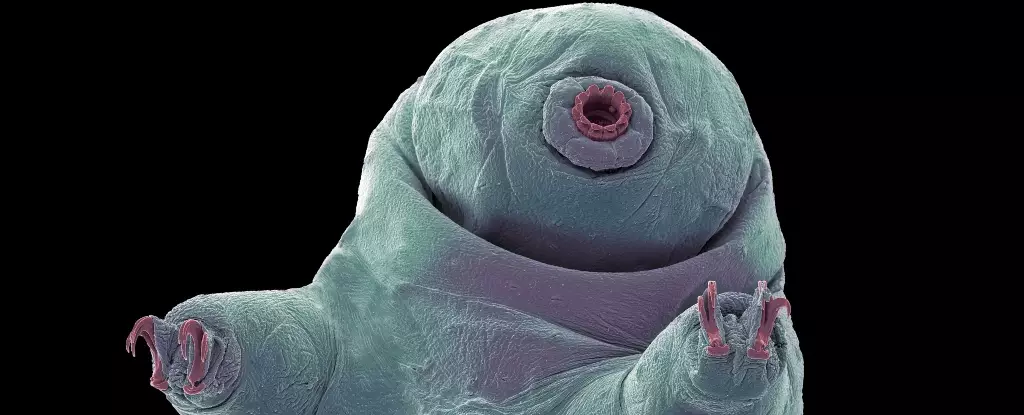The 2025 Lunar and Planetary Science Conference, held from March 10–14 in The Woodlands, Texas, provided a thrilling glimpse into the future of space science and exploration. Among the myriad of concepts presented, one question surfaced profoundly: How can humanity adapt and thrive in the unforgiving realms of space and other planets? This inquiry does not just filter through to practical mission design; it speaks to our fundamental understanding of life and resilience beyond Earth. Researchers are gravitating towards extremophiles—organisms that endure extreme environmental conditions—particularly tardigrades, to unravel the potential for human survival in extraterrestrial habitats.
Tardigrades: Nature’s Tiny Survivors
The focus of the conference highlighted a groundbreaking study led by Isadora Arantes, an astronaut candidate with NASA, and Geancarlo Zanatta, an Associate Professor at the Federal University of Rio Grande do Sul. This duo is at the forefront of research examining tardigrades, also affectionately known as “water bears,” due to their uncanny ability to withstand conditions that would obliterate most life forms. Their study showcases the extreme adaptability of these microscopically small creatures, surviving temperatures that span from -271°C to over 150°C, along with high radiation levels and immense pressure. These findings provoke an important question: could tardigrades inform strategies for human survival in environments like Mars or the icy moons of Europa and Titan?
Diving into Molecular Mechanics
Arantes and Zanatta’s research primarily revolves around a protein called Dsup (Damage Suppressor), crucial for the tardigrade’s stellar resilience. This remarkable protein forms a protective barrier around genetic material, effectively mitigating DNA damage from exposure to radiation. Utilizing advanced Gromacs software, they conducted molecular dynamics simulations that elucidated how Dsup minimizes mutations, a revelation that biotechnology could exploit to improve human cellular resilience. Such findings reveal not only the strength of tardigrade proteins but also their potential applications in enhancing human adaptability to extreme environments, both terrestrial and extraterrestrial.
In parallel, the researchers explored heat shock proteins (HSPs) and antioxidant enzymes. These components play vital roles in stabilizing proteins during thermal stress and combatting oxidative damage resulting from extreme radiation exposure. As highlighted in their findings, the survival mechanisms of tardigrades serve as a crucial model for understanding life beyond Earth. The implications stretch far, as they suggest that similar life forms might exist in extreme environments across the galaxy, which challenges our preconceptions of where life can thrive.
Astrobiology and Beyond
The implications of this research extend beyond astrobiology—this inquiry into tardigrades can also pave a path for significant advancements in biotechnology. The findings could enhance human radiation resistance, aid in cellular preservation under harsh temperatures, and even foster the engineering of crops capable of surviving extreme atmospheric conditions. By understanding extremophiles like tardigrades, researchers are not only filling gaps in our scientific knowledge but also confronting some of humanity’s most pressing ecological challenges. This dual focus underscores the interconnectedness of our survival on Earth and our aspirations to reach for the stars.
As Arantes and Zanatta emphasize, methods that incorporate both experimental and computational approaches are crucial for unlocking the secrets of extremophile resilience. Such interdisciplinary collaboration will be pivotal in advancing our comprehension of life’s capacity to prosper in environments that the human body cannot inherently withstand.
Visions for the Future
As we stand at the cusp of new astronomical frontiers, the continued study of organisms like tardigrades highlights a profound paradigm shift in how we approach space exploration. The conviction that life can adapt in even the most hostile conditions emboldens scientific inquiry and spurs innovation. For instance, the stability of tardigrade proteins in the face of extreme environments suggests that similar adaptive qualities might help human endeavors on Mars, Europa, and Titan.
In light of the knowledge gleaned from these resilient fleshy microbes, we find ourselves both humbled and inspired. Humanity’s quest to transcend its limitations could be informed by the very organisms we once overlooked, magnifying the importance of biodiversity and biological research in shaping not only our future on Earth but also our interplanetary aspirations. Using nature as a model for resilience invites a deeper exploration of how life endures against the odds—a rallying call for scientists, innovators, and the curious mind alike to embrace extremophiles as vital allies on our journey through the cosmos.


Leave a Reply